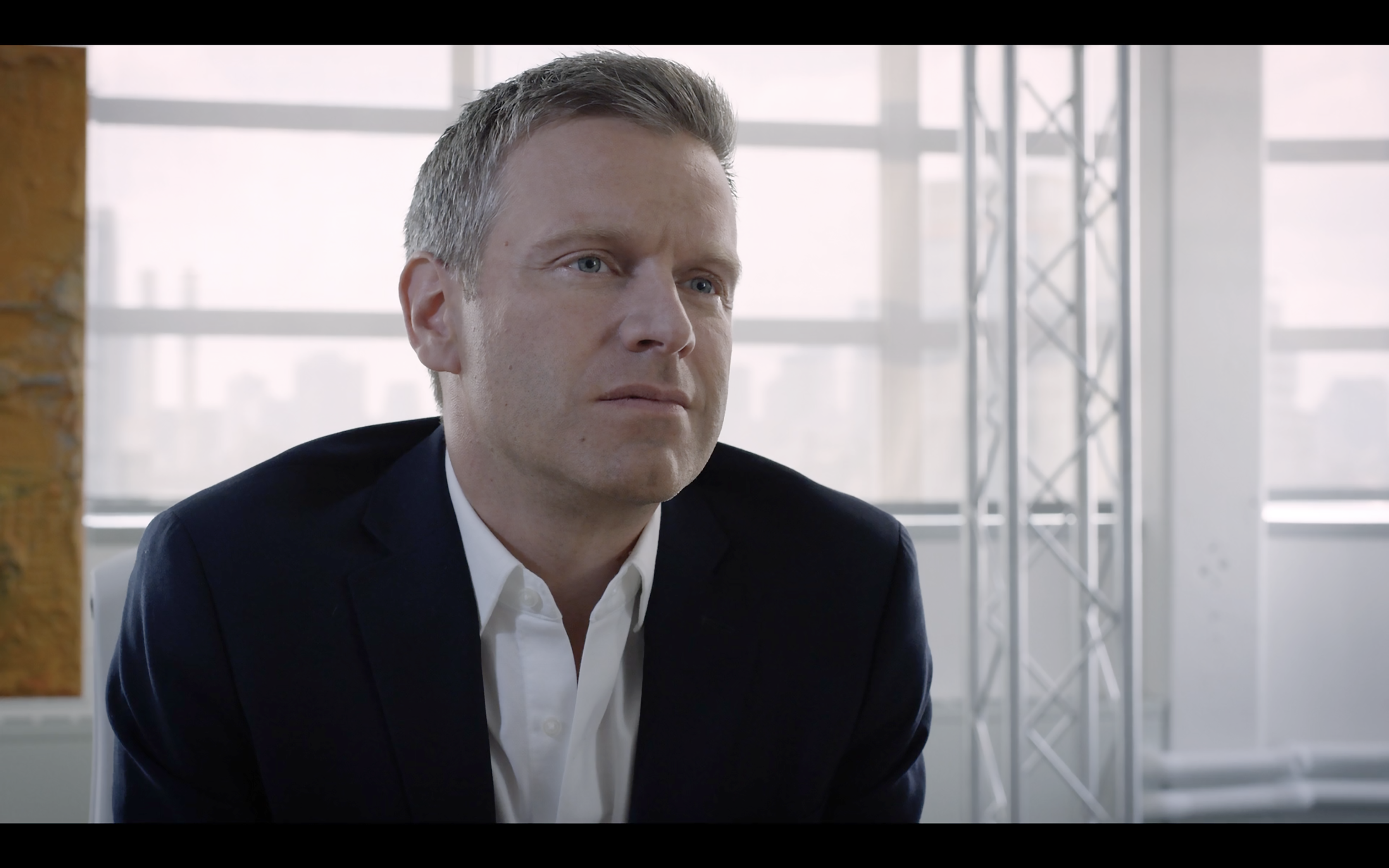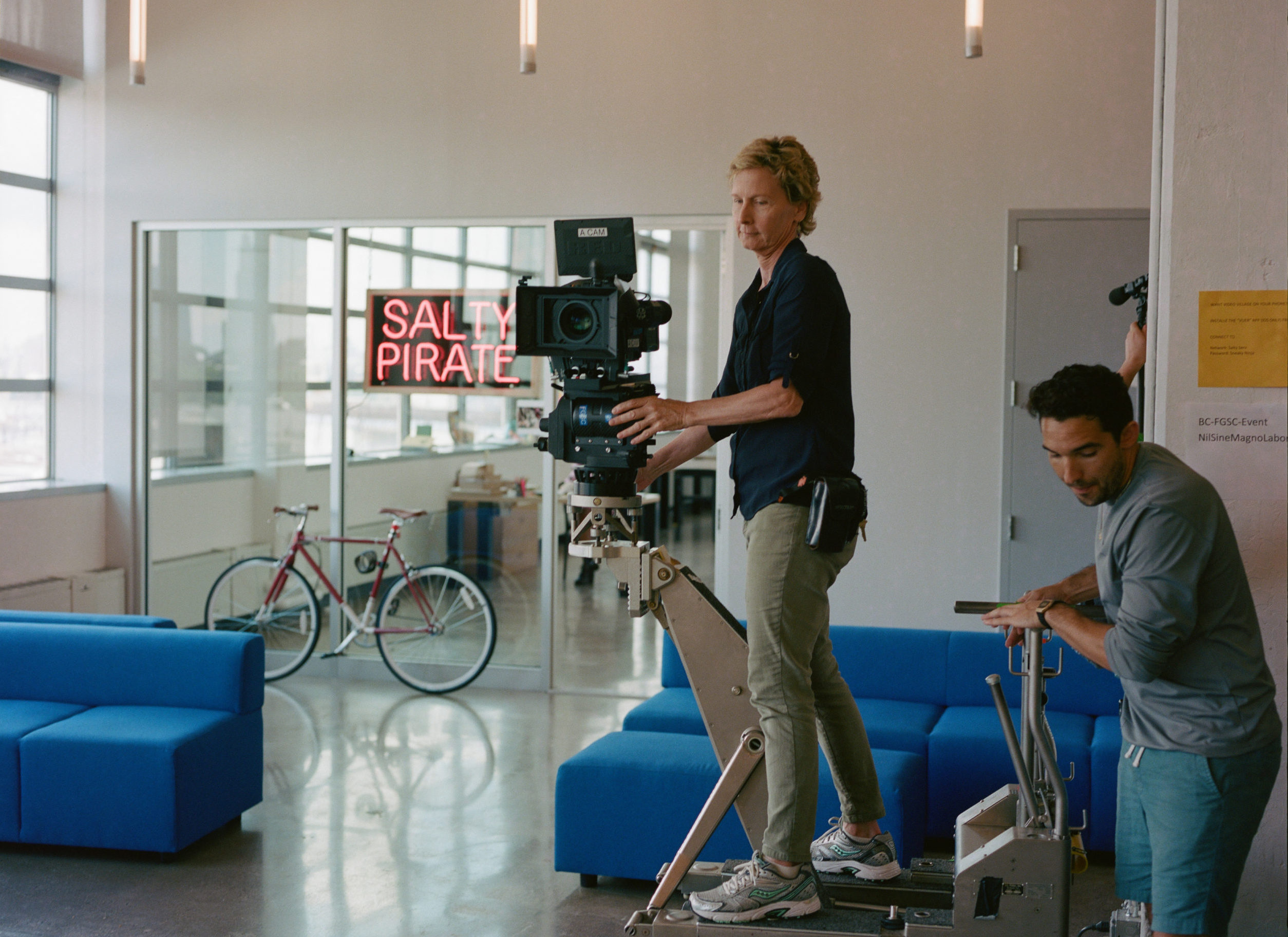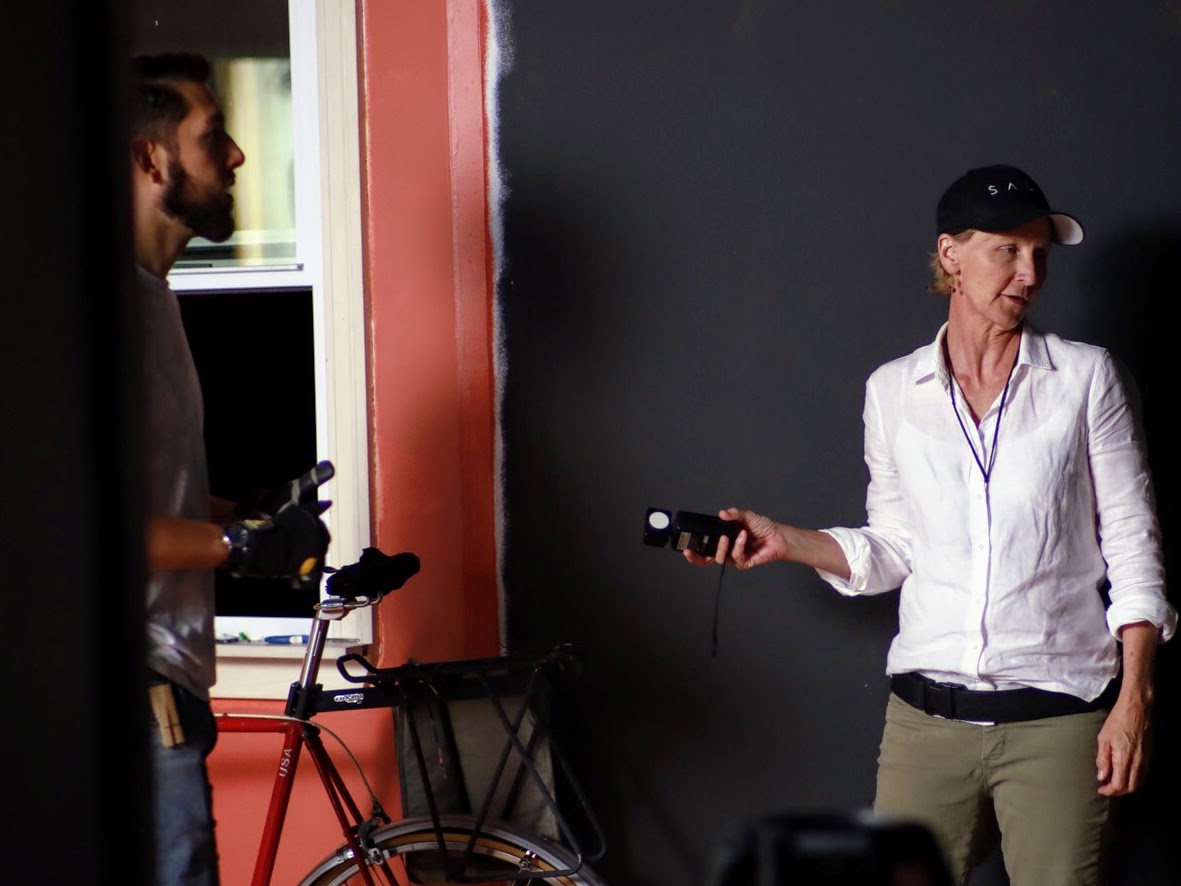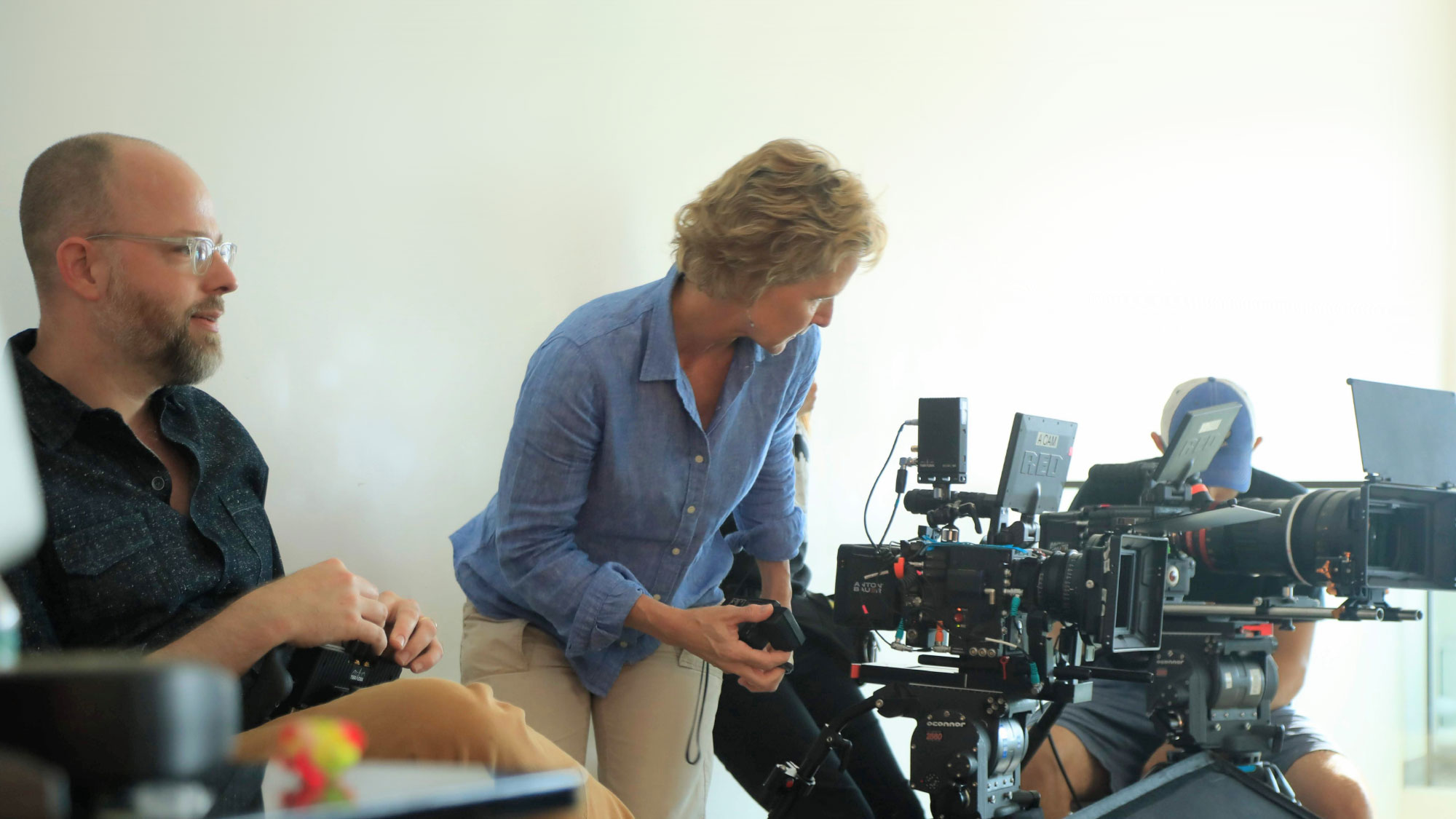Sarah Cawley, cinematographer on Ugly Betty, Manifest, and Salem, was able to take the full-frame SIGMA Cine Prime lenses for a spin on the series Salty Pirate, now streaming on Amazon Prime. She explains her standards for how to test cinema lenses for a particular project. The first aspect of evaluating cinema lenses is to test them against some of the harshest conditions your shoot will experience.
Checking Flare
One of the first tests placed a performer in front of a window to check for flare. As creator Charles Haine recalled, “It’s barely there, if at all.” Likewise, Cawley marveled at the lack of chromatic aberration and fringe. “I love that even when there’s a hot spot in the frame, there’s no chromatic aberration at all, no fringing—and we have a 4K screening room” with a 20 foot screen and a Sony DCI projector to view the results.

This allowed them to comfortably shoot backlit scenes. “I was amazed how little they flared even with a big light in the background” like the shots in Lou’s office. Haine went on to say, “you can have the sun shine straight down the barrel [of these SIGMA FF Cine lenses] and not worry.”
Matching Across Cameras
Having multiple lenses was crucial for Salty Pirate since they shot with two cameras simultaneously. For example, in one of the key scenes (we won’t spoil it for you), Cawley used “matching dolly shots in the 50mm/85mm range and pushed in to isolate [the actor]. We did matching moves of two against one. That was my favorite scene.” Haine went further to say that although they shot on two cameras throughout the series, “it was like shooting with one camera—they [SIGMA FF Cine lenses] match so well, lens to lens. I can feel comfortable putting these lenses on two cameras and they will totally intercut” with no problems thanks, in part, to Sigma’s standardized color balance across lenses.
For Cawley, the wide-angle lenses, especially the 14mm T1.5, were her favorites because “They don’t distort on the X-Y axis at all.”

Build Quality
In addition to edge-to-edge sharpness, the SIGMA FF Cine lenses’ bokeh drew praise from both Cawley and Haine. “The bokeh was really beautiful and painterly,” Cawley recalled, adding, “It had a nice roundness and depth.” Haine said, “The smoothly textured bokeh spoke to me; it had a nice personality.”
And the lenses, with their 180-degree focus rotational angle, focused beautifully. Cawley commented that in addition to “feeling great in the hand,” there was “no breathing. The close focus is beautiful.” Haine added that, “I can’t remember having to do a second shot for focus,” giving extra credit for the well-marked lenses.
Cawley also liked the redesigned form factor saying that “It’s substantial but not bulky.” The all-mechanical operation was another plus, as was the similarity in body size across the lenses. “I liked the consistent body size,” said Haine adding that the standardized gear positions “made it easy to swap lenses” without losing a beat.

Advice for Cinematographers
As her career grew, Cawley wanted to transition from AC to DP. “I knew it was going to be a difficult step but I made the move as quickly as I could,” she recalls. Gaining a solid reputation and meeting and working with other DPs helped her along. She developed a working relationship with Richard Shepard, among other notables in the industry, and when Shepard moved into TV, she made the transition as well
“One of my main pieces of advice,” for starting or growing a filmmaking career, Cawley notes, “is taking every opportunity that you can to meet people.” Acknowledging that today’s lockdowns and safety precautions make meeting people more difficult, “this too shall pass.” And when it does, “Say yes to trade shows, go to lighting demos. In person contacts are really valuable and lead to more in person contacts. Getting an email isn’t as good as having a face-to-face conversation with someone.”
The filmmaking industry is huge but keep in mind that word of mouth and recommendations are critical to getting jobs. “If I need a gaffer in a town where I don’t have one, I’ll call some DP’s and ask if they have someone they can personally recommend. A personal reference means a lot more than if production hands me a stack of resumes,” Cawley points out.
Doing good work, being easy to work with and building solid relationships all pay off. Not everyone will make the most of the opportunities available but, Cawley says, “people who do will certainly see the benefits.”
For more information:
Salty Pirate: www.saltypirate.tv
Charles Haine: www.charleshaine.com; www.nofilmschool.com
Sarah Cawley: www.cawleydp.com
Read how Haine and Cawley’s team was able to create this series with a small team: Creating an Independent Series with a Small Team


